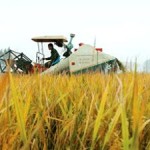Table 3 analyses some of the forest studies carried out in different study areas using different resolution satellite data. Satellite remote sensing data has been used in monitoring of forests since three decades. Various organizations both government and non-government around the world are taking interest in this direction and attempts have been successful.

Further, I would like to illustrate some of the successful attempts of Forest Mapping:
In the 70s, an initiative was taken by National Remote Sensing Agency, Hyderabad to map the forests of India. Since then various satellite data (of different resolutions) has been used for this purpose. The forests were mapped using visual interpretation of remotely sensed data at 1:1 million scale for the time periods 1972-75 and 1980-82.
Since 1987, Forest Survey of India (FSI) is assessing the forest cover of the country using remote sensing data on a two-year cycle basis. The aim of the project was to collect information on forest resources of the country at state and district level. FSI has been successful in preparing maps on 1:50,000 scale and this information is available in the form of hard and soft copies as per requirement of the users. There have been ten assessments so far between the periods 1987-2005. The first assessment used LANDSAT–TM data of U.S. satellite having resolution of 80m. The second, third and fourth assessments were carried out by using 30m resolution of LANDSAT–TM. IRS-LISS II was used for fifth and sixth assessment. The seventh, eighth, ninth and tenth assessments have been carried out by using IRS 1C/1D LISS III data.
Since 1989, the World Conservation Monitoring Centre (WCMC) has collected spatial data on world’s moist tropical forests. The aim of this project was to quantify the forest extent, ensure protection measures and biodiversity conservation. The digital data are stored in WCMC Geographic Information System, the Biodiversity Map Library (Billington, 2000).
In early 90s, the Tropical Ecosystem Environment Observations by Satellites (TREES) project was started with an aim to monitor forest cover throughout the tropics. The project was sponsored by European Commission. Global tropical humid forest cover change (1990-1997) was analyzed using coarse resolution (1Km), i.e., AVHRR satellite data extensively. Spatial and non-spatial database are stored in the form of Tropical Forest Information System (TFIS), which is available to the user via Internet. Information is available from local to global scale (Achard et al., 2002).
In 2002, in India, efforts have been undertaken to characterize biodiversity at landscape scales. The initiative was taken by the Department of Space and the Department of Biotechnology, Government of India. Biodiversity characterization at landscape level using Indian remote sensing satellite data in North Eastern region, Western Ghats, Western Himalaya, Andaman & Nicobar Islands, Eastern and Central India (2002) has been done. The result of the study is creation of geospatial database that Biological Information System on vegetation cover types, disturbance regimes and biological richness. An attempt was made to link the spatial database with the species database and field sample data laid down in the different stratum of vegetation. Thus, this information system is a step taken forward for biodiversity conservation programmes. (URL: http://www.bisindia.org/).













